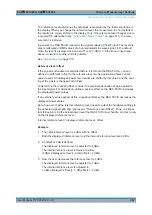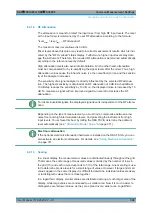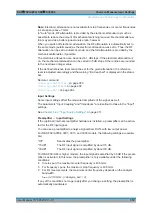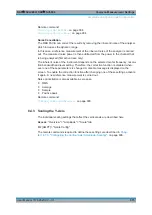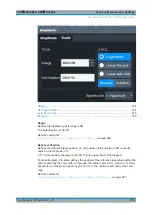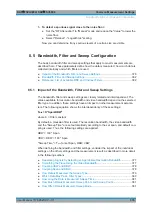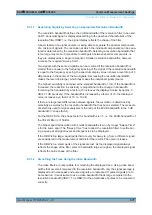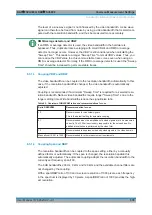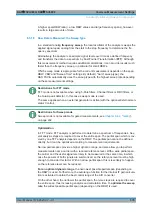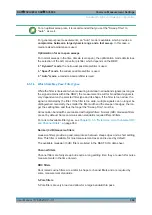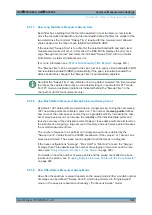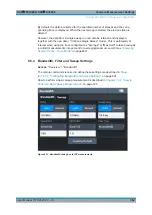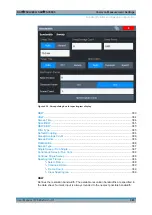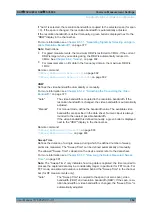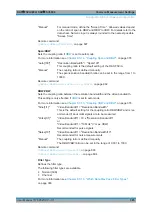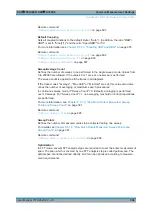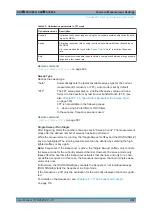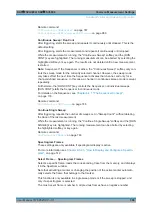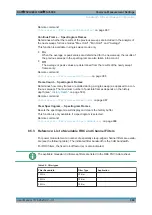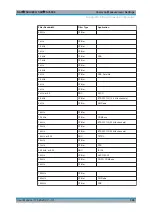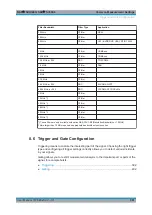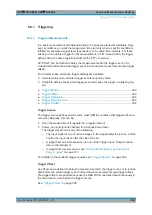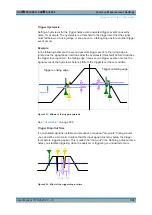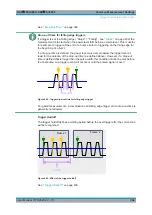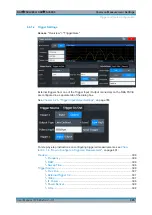
Common Measurement Settings
R&S
®
FSVA3000/ R&S
®
FSV3000
381
User Manual 1178.8520.02 ─ 01
8.5.1.7
How Long the Data is Measured: Sweep Time
Each filter has a settling time that must be awaited in order to obtain correct results.
Since the resolution bandwidth and video bandwidth define the filter, the smaller of the
two determines the minimum "Sweep Time" required for the measurement. Allowed
values depend on the ratio of span to RBW and RBW to VBW.
If the selected "Sweep Time" is too short for the selected bandwidth and span, level
measurement errors will occur. In this case, the R&S
FSV/A displays the error mes-
sage "Sweep time too low" and marks the indicated "Sweep Time" with a red bullet.
Furthermore, a status bit indicates an error.
(For more information see
"STATus:QUEStionable:TIMe Register"
The "Sweep Time" can be coupled to the span (not zero span), video bandwidth (VBW)
and resolution bandwidth (RBW) automatically. If the span, resolution bandwidth or
video bandwidth is changed, the "Sweep Time" is automatically adjusted.
Note that the "Sweep Time" only indicates how long data is captured; the time required
to process the captured data may be considerably longer, in particular for FFT mode.
For FFT mode, an estimated duration is indicated behind the "Sweep Time" in the
channel bar (for RF measurements only).
8.5.1.8
How Much Data is Measured: Sweep Points and Sweep Count
By default, 1001 data points are determined in a single sweep. During the next sweep,
1001 new data points are collected, and so on. The number of
sweep points
defines
how much of the entire span is covered by a single data point. By increasing the num-
ber of sweep points you can increase the reliability of the individual data points and
thus the accuracy of the analyzed results. However, these data points are all stored on
the instrument, occupying a large amount of memory, and each sweep point increases
the overall measurement time.
The number of sweeps to be performed in single sweep mode is defined by the
"Sweep Count". Values from 0 to 200000 are allowed. If the values 0 or 1 are set, one
sweep is performed. The sweep count is applied to all the traces in a diagram.
If the trace configurations "Average" , "Max Hold" or "Min Hold" are set, the "Sweep/
Average Count" also determines the number of averaging or maximum search proce-
dures (see
"Analyzing Several Traces - Trace Mode"
For details on how the number of sweep points and the sweep count affect the trace
results on the screen, see
"Mapping Samples to sweep Points with the Trace Detector"
8.5.1.9
How Often Data is Measured: Sweep Mode
How often the spectrum is swept depends on the sweep mode. Either a certain number
of sweeps can be defined ("Sweep Count") which are performed in "Single Sweep"
mode, or the sweep is repeated continuously ( "Continuous Sweep" mode).
Bandwidth, Filter and Sweep Configuration

